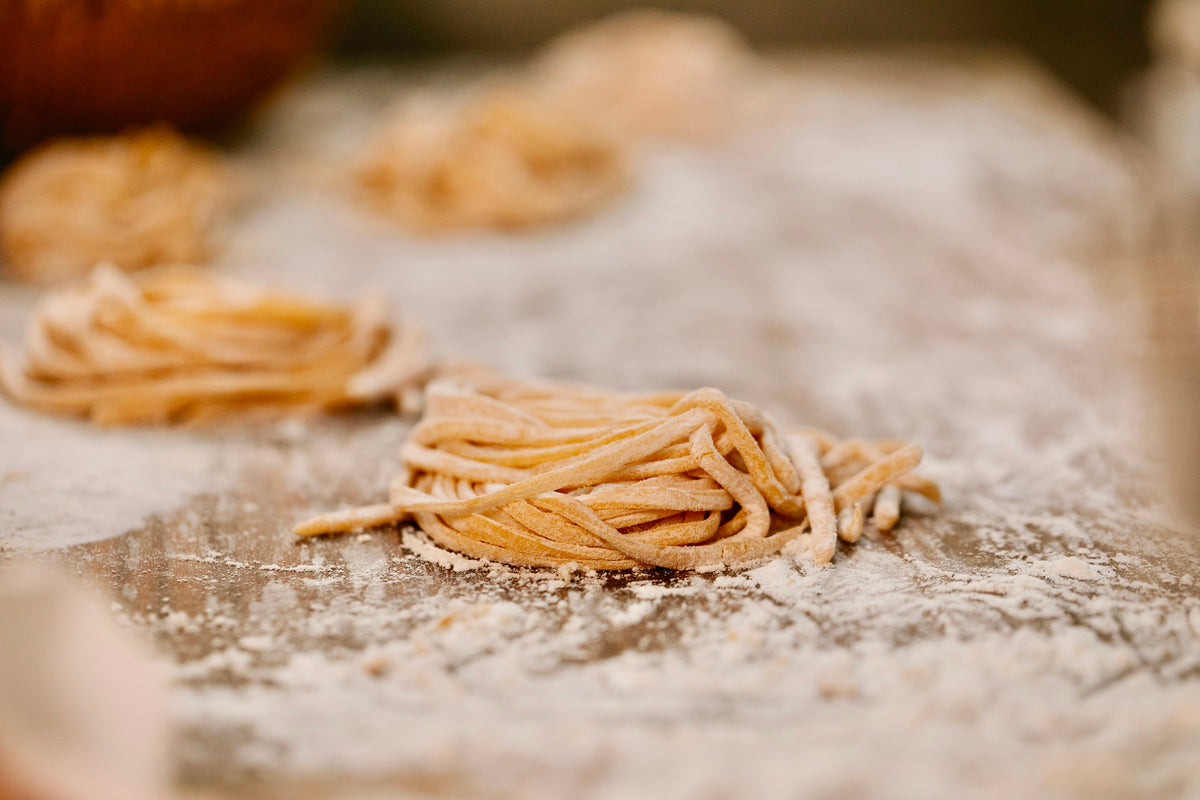So, I had this craving the other day, you know? For proper, fresh taglierini. Not the stuff from a packet, though that has its place, mind you. I just fancied getting my hands dirty and making something from scratch. It’s been a while.

Why Bother, You Ask?
Good question. Sometimes I wonder myself when I’m halfway through and there’s flour coating every surface of the kitchen. But there’s something satisfying about it, isn’t there? Taking simple ingredients and turning them into a meal. Plus, you know exactly what’s gone into it. And honestly, the texture of fresh pasta, when you get it right, is just something else. So, I decided, yeah, let’s do this.
Getting the Gear Together
Didn’t need much, which is the beauty of it. I grabbed:
- A good pile of ’00’ flour – makes a difference, I reckon.
- A couple of large, fresh eggs. The better the eggs, the richer the pasta.
- A pinch of salt. That’s pretty much it. Some folks add olive oil, but I kept it simple this time.
The Dough Making Ritual
Alright, so I tipped the flour out onto my worktop. Made a decent-sized well in the middle, like a little volcano. Cracked the eggs right into the crater. Added that pinch of salt. Then, gently, with a fork, I started whisking the eggs, slowly bringing in bits of flour from the inside wall of the well. You gotta go slow at first, otherwise, you’ll have an egg-y, flour-y flood on your hands. Been there, done that.
Once it started to come together into a shaggy mess, I ditched the fork and went in with my hands. Bringing it all together into a rough ball. Then the real work started: kneading. I set a timer for a good 10 minutes. Pushing, folding, turning. It’s a bit of a workout, good for the arms. You’re looking for the dough to go from rough and sticky to smooth and elastic. It takes a bit of patience, but you can feel it change under your hands.
Resting the Dough is Key

Once I was happy with the feel of it – smooth, pliable, not too sticky – I wrapped it up tightly in cling film. Some people use a damp cloth. The main thing is you don’t want it to dry out. Popped it in the fridge for about 30 minutes. This lets the gluten relax, makes it easier to roll out later. Crucial step, don’t skip it. Gave me a chance to have a quick cuppa and clear up some of the flour dust that had inevitably settled everywhere.
Rolling it Out and Cutting Those Ribbons
After its little rest, I took the dough out. Unwrapped it. Cut it into a couple of manageable pieces. Now, I don’t have one of those fancy pasta machines. Just my trusty rolling pin. Dusted the work surface with a bit more flour, and a bit on the rolling pin too. Started rolling. The aim is to get it thin. Really thin. For taglierini, you want it almost see-through. This takes a bit of effort and you have to keep turning the dough, rolling from the center outwards, to try and get it even.
Once I had a sheet I was reasonably happy with – let’s be honest, it wasn’t perfectly uniform, but good enough for home cooking – I lightly floured it again. Then, I gently rolled it up like a loose cigar. With a sharp knife, I started slicing thin strips, maybe 2-3mm wide. That’s your taglierini. As I cut them, I immediately tossed them with a bit more flour and spread them out on a lightly floured tea towel to stop them sticking together. It’s a bit fiddly, but quite therapeutic in a way.
The Moment of Truth: Cooking and Tasting
Got a big pot of salted water on a rolling boil. Fresh pasta cooks super quick. Dropped the taglierini in. Gave it a gentle stir. Within about 2-3 minutes, they were floating to the top, which is usually a good sign they’re done. You want them al dente, with a bit of bite.

I kept the sauce simple. Just a bit of good quality butter melted in a pan with some fresh sage leaves until the butter was nutty and brown. Drained the pasta – reserving a little of the cooking water, always a good tip – and tossed it straight into the pan with the sage butter. Added a splash of that pasta water to help the sauce coat the strands. A good grating of Parmesan cheese on top, of course.
So, What’s the Verdict?
Honestly? It was lovely. The texture was tender, delicate. The simple sauce really let the pasta shine. You could taste the egg. It just felt… wholesome. Was it a bit of a faff? Yes, undoubtedly. There was flour to clean up. It took time. But sitting down to that bowl of fresh, homemade taglierini, yeah, it felt worth it. It’s not something I’d do every day. Sometimes a quick packet of dried pasta is exactly what’s needed. But for a weekend, when you have a bit more time, it’s a really satisfying process. Makes you appreciate the simple things, I suppose. And it definitely beats that one time I tried to make ravioli from scratch and ended up with… well, that’s a story for another day.









